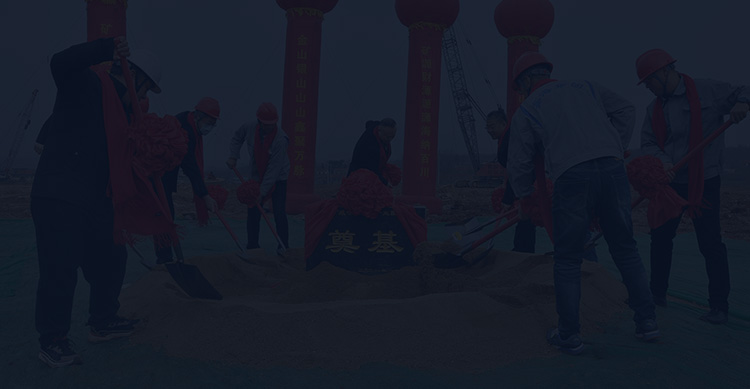
Nickel metal has strong corrosion resistance, heat resistance, good plasticity and toughness, and can be widely used in steel, non-ferrous smelting, electroplating, chemical industry, machinery and other industries. Currently, the nickel ore that can be mined is mainly magmatic nickel sulfide ore and weathered nickel oxide ore. Let's explore how to select nickel ore? Reveal the nickel ore beneficiation method!
Nickel sulfide ore is mainly composed of pentland pyrite and nickel sulfide, and is often symbiotic with copper, lead, zinc, etc. Due to the good quality of nickel sulfide ore resources and mature process technology, about 60% of nickel production now comes from nickel sulfide ore. At present, the commonly used nickel sulfide ore beneficiation method is mainly flotation, including priority flotation and mixed flotation.
.jpg)
Preferred flotation of nickel sulfide: Usually in sulfide copper-nickel ore, chalcopyrite has better floatability than pentland pyrite, and copper minerals float faster and easier than nickel minerals. When the mineral symbiosis is simple, the copper grade in the original ore is high, and the nickel grade is low, the priority flotation process can be considered to ensure the recovery of copper minerals. Pentland pyrite is easily suppressed and difficult to be activated, and the priority flotation process will affect the recovery of nickel to a certain extent.
Mixed flotation of nickel sulfide: The sulfide ore and silicate gangue minerals are first flotated and separated, and the copper and nickel sulfide minerals enter the foam product together to obtain a mixed concentrate. The copper concentrate and nickel concentrate are then obtained through separation and flotation, or copper is separated during the smelting process.
This type of nickel oxide is also called laterite nickel ore. With the long-term mining of nickel sulfide ore, the global nickel sulfide ore has faced a resource crisis, and nickel oxide has become the focus of development. However, the composition of laterite nickel ore is complex, and there are also great difficulties in the beneficiation process. At present, the commonly used methods are mainly pyrometallurgical process, hydrometallurgical process and combined pyrometallurgical process.
.png)
Fire process: According to the different products, it can be divided into two types: reduction smelting process for producing nickel iron and reduction sulfidation smelting process for producing nickel matte. Among them, reduction smelting is more widely used for producing nickel iron. The process of producing nickel iron by electric furnace smelting is suitable for processing various nickel oxides. Its production scale can be determined according to the supply of raw materials and the storage of ore, and can be large or small. There is no strict requirement for the particle size of the furnace charge, but the disadvantage is high energy consumption. In the process of reducing sulfidation smelting to produce nickel matte, the sulfiding agents required during operation include pyrite, gypsum, sulfur and sulfur-containing nickel raw materials. After roasting and desulfurization, the nickel oxide can be directly reduced and smelted to produce general nickel for the stainless steel industry. It can also be used as a raw material for refining nickel by atmospheric pressure carbonyl method to produce nickel pills and nickel powder. Since high nickel matte does not contain copper, it can also be directly cast into anode plates and sent to the factory of nickel sulfide electrolytic refining to produce cathode nickel.
.png)
Wet process: It is divided into ammonia leaching process and acid leaching process according to the different leaching solutions. Among them, ammonia leaching was used earlier. It is a method of drying and reducing the nickel oxide ore and then leaching it with ammonia at normal pressure in multiple stages. However, this method is not suitable for treating nickel oxide ores with high copper and cobalt content and silicon-magnesium-nickel type nickel oxide ores, and is only suitable for treating laterite ores on the surface. The acid leaching method is to dissolve valuable metals such as nickel and cobalt together with iron and aluminum minerals with dilute sulfuric acid at 250~270℃ and 4~5MPa, and control a certain pH value and other conditions in the reaction, so that impurity elements such as iron, aluminum and silicon are hydrolyzed into the slag, and nickel and diamond selectively enter the solution, and nickel is obtained from the solution by solvent extraction and sulfide precipitation. This method is mostly suitable for treating nickel oxide ores with low magnesium content.
.jpg)
Fire-wet combined process: This method is less used. Its process mainly involves grinding the raw ore and mixing it with pulverized coal to make agglomerates, then drying and high-temperature reduction roasting, grinding the roasted agglomerates again, and separating the slurry by beneficiation (gravity separation and magnetic separation) to obtain nickel-iron alloy products.
The above is an introduction to nickel ore beneficiation methods. So how should you select your nickel ore? You need to first understand the properties of nickel ore and the impurities it contains. It is more effective to formulate a suitable process plan through beneficiation tests.
.jpg)
Xinhai Mining has many years of experience in nickel ore beneficiation. It can not only provide nickel ore beneficiation tests, but also carry out beneficiation process design, provide a complete set of nickel ore beneficiation equipment and equipment packaging and shipment, and later commissioning, management and operation.
To find out more about our products and solutions, please fill out the form below and one of our experts will get back to you shortly.